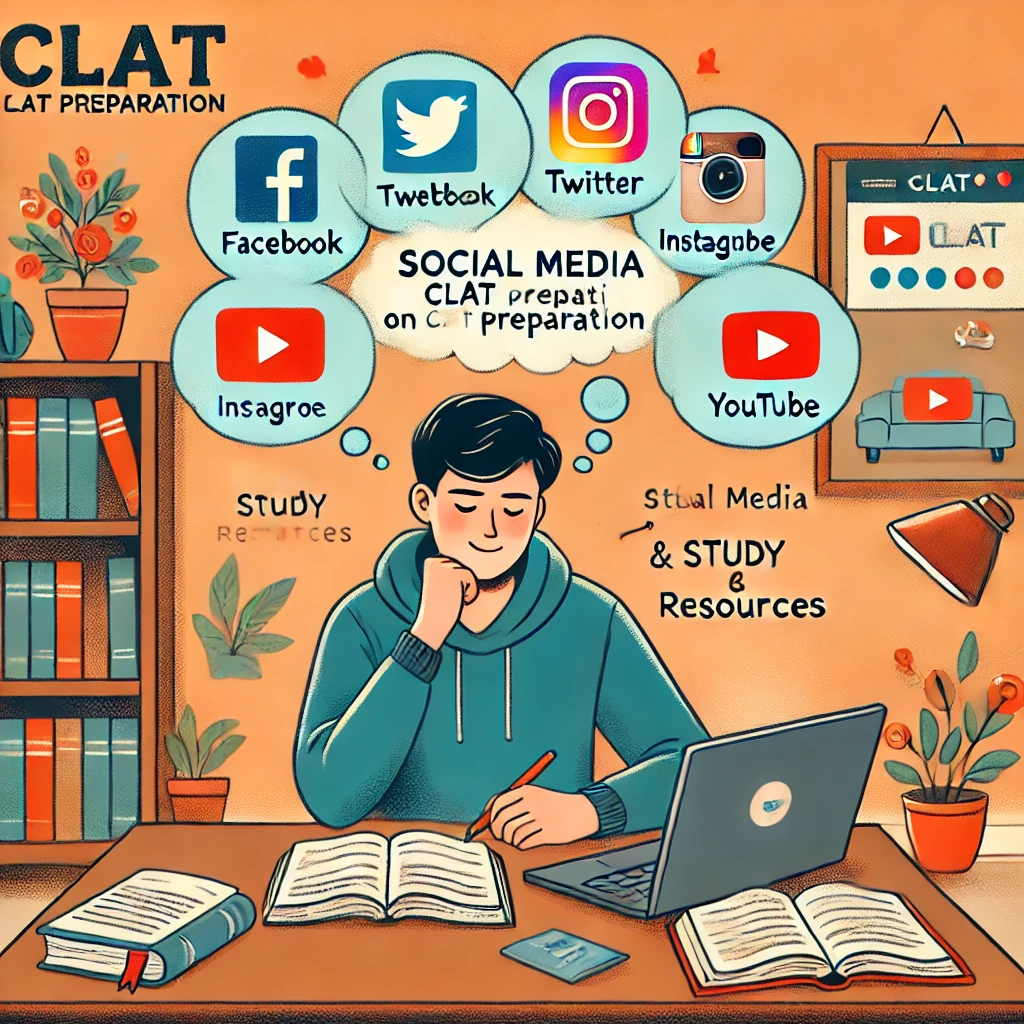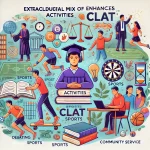In recent years, social media has become an integral part of our daily lives, influencing how we communicate, access information, and engage with the world around us. For students preparing for competitive exams like the Common Law Admission Test (CLAT), social media can be a double-edged sword. While it can serve as a source of distraction, when used wisely, it can also be a powerful tool for enhancing CLAT preparation.
1. Access to Study Resources and Expert Guidance
One of the most significant benefits of social media for CLAT aspirants is the easy access to a vast array of study resources and expert guidance. Platforms like YouTube, Instagram, and Facebook have become hubs for educational content, where law educators, coaching institutes, and successful CLAT candidates share valuable tips, strategies, and study material.
- Example: Several YouTube channels, like LawPrep Tutorial or Vidhigya’s YouTube channel, offer free CLAT preparation videos, including topic explanations, mock test analyses, and exam strategies. Instagram pages run by law educators often provide quick tips, vocabulary lessons, and updates on important legal news.
- Benefit: This accessibility allows students to learn from experts without the need for expensive coaching classes or physical resources. They can also engage in discussions through comments and live sessions, getting personalized advice.
2. Joining Study Groups and Communities
Social media platforms like Facebook and WhatsApp offer the opportunity to join study groups and communities where students preparing for CLAT can interact with like-minded peers. These groups can be valuable for discussing doubts, sharing study materials, and staying motivated throughout the preparation journey.
- Example: Facebook groups such as “CLAT Aspirants 2024” and Telegram channels dedicated to CLAT preparation bring together students from different parts of the country, creating a space for knowledge exchange.
- Benefit: These groups serve as virtual classrooms where students can share their experiences, discuss tricky legal concepts, or debate over current affairs. Being part of a supportive community can help reduce the isolation often associated with exam preparation.
3. Staying Updated on Current Affairs
The General Knowledge and Current Affairs section is an integral part of the CLAT exam, and staying updated with the latest news is crucial. Social media platforms like Twitter and LinkedIn have become go-to sources for real-time news updates, legal developments, and expert opinions.
- Example: By following news portals, legal professionals, and government organizations on Twitter, CLAT aspirants can stay informed about the latest national and international events. LinkedIn is also a great platform to follow law firms and legal experts for insights on legal trends.
- Benefit: Social media makes it easier to stay on top of current affairs, which is essential for scoring well in the CLAT General Knowledge section.
4. Test Series and Mock Tests
Several educational platforms offer mock tests, quizzes, and test series on social media platforms. Engaging with these tests can provide students with a way to assess their preparation and identify areas that need improvement.
- Example: Instagram quizzes or Telegram channels often post daily questions based on past CLAT papers or current affairs. Additionally, several YouTube channels conduct live mock tests, giving students a real-time simulation of the exam environment.
- Benefit: These online tests help students get accustomed to the CLAT exam format, improve their time management, and build confidence.
5. Motivation and Mental Health Support
The stress of CLAT preparation can sometimes take a toll on students’ mental health. Social media platforms provide access to motivational content, well-being tips, and support groups where students can share their struggles and find encouragement.
- Example: Instagram pages run by motivational speakers or mental health professionals often post content aimed at helping students manage exam stress and stay motivated. Hashtags like #CLATPrep and #LawAspirants are often used by students sharing their own preparation journeys, which can inspire others.
- Benefit: A positive mindset is crucial for success in competitive exams, and social media can offer emotional support through online communities and motivational content.
6. Avoiding the Pitfalls
While social media offers many benefits, it can also become a major distraction if not used wisely. The addictive nature of platforms like Instagram, TikTok, and Facebook can lead to wasted time, procrastination, and loss of focus.
- Solution: To avoid these pitfalls, students should set clear boundaries for social media usage. Limiting screen time, using apps that block distractions, or dedicating specific times for social media can help maintain focus on CLAT preparation.
Conclusion
By integrating social media strategically into your study routine, you can transform it from a potential distraction into a powerful ally in your CLAT preparation. Embrace its benefits while remaining disciplined, and you’ll be well on your way to achieving your goals in this competitive exam.



